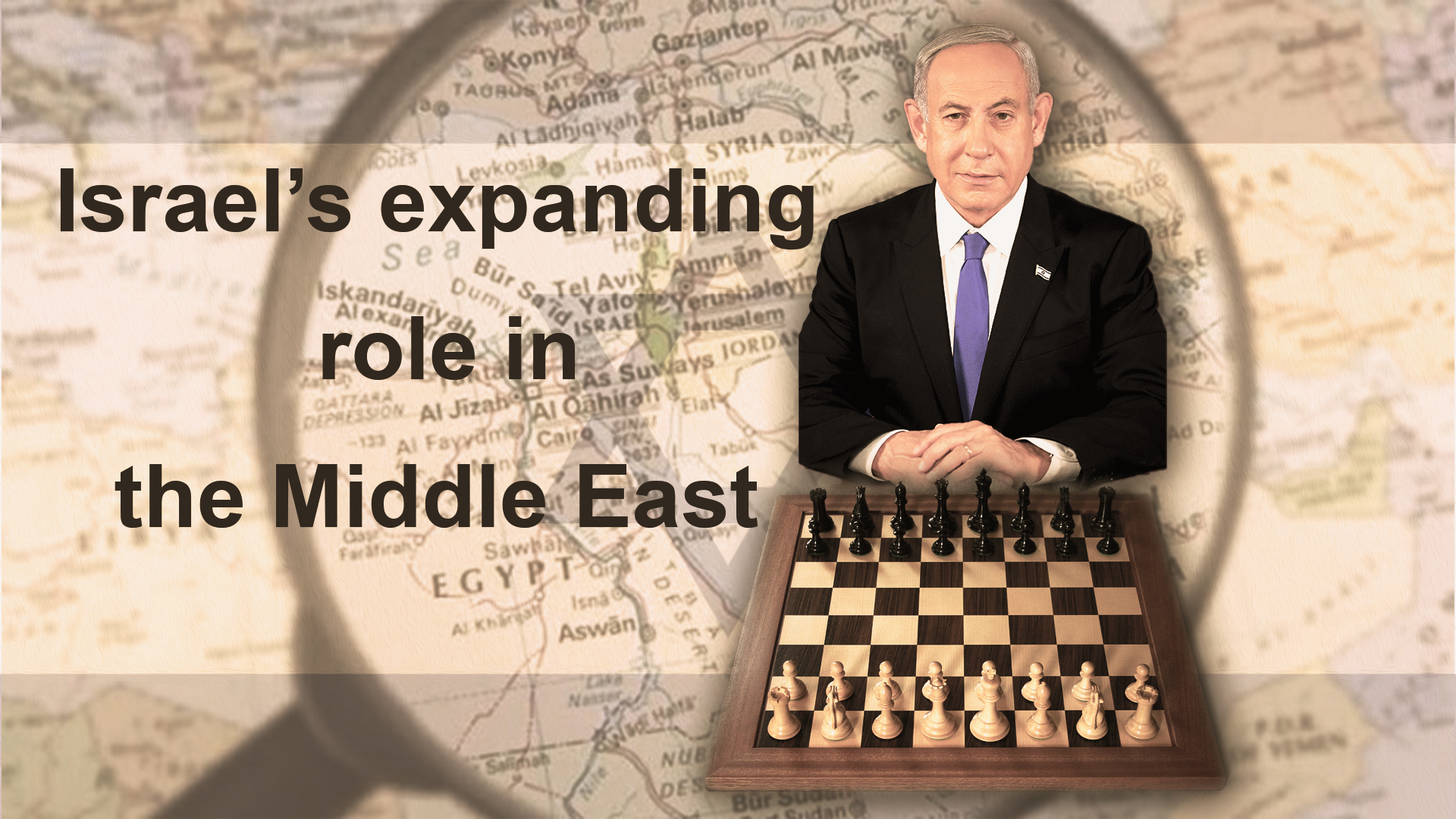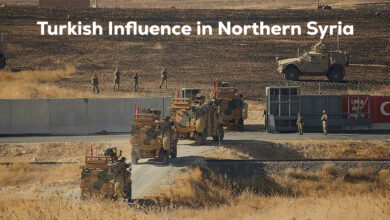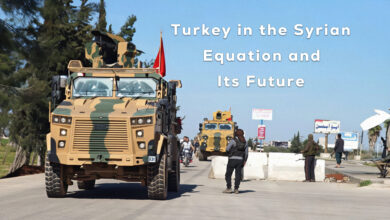Israel’s expanding role in the Middle East

The Middle East remains a region of instability, fueled by regional interventions, particularly from Turkey and Iran, as they pursue expansionist agendas in Syria and Iraq. While the Assad regime historically played a role in maintaining Israel’s security, the evolving dynamics have led Israel to reassess its position, despite its existing relationship with Turkey.
Israel has never been distant from the region’s crises and developments. While its role may not always have been direct, the events of October 7 marked a turning point, shifting its foreign policy from covert influence to overt intervention. This transformation has extended beyond Gaza and Hamas to Lebanon’s Hezbollah and deeper into southern Syria. Israel’s military operations in Lebanon and Syria have significantly weakened, if not eliminated, Iran’s regional proxies, disrupting what was once known as the “Axis of Resistance.”
However, these developments have also reshaped regional power dynamics. Turkey, in particular, views the situation as an opportunity, especially after Hayat Tahrir al-Sham (HTS) consolidated power in Damascus. Turkey has expanded its military presence in occupied northern Syria and is leveraging the transitional government’s vulnerabilities to push through strategic agreements on border demarcation, communications, and security cooperation. This shift has raised Israeli concerns regarding Turkey’s long-term ambitions, particularly as Iran now seeks alternative routes—potentially through Turkey—to sustain Hezbollah’s supply lines. This raises a pressing question: Is Turkey looking to extend its influence over Hezbollah as part of a broader security strategy?
Israel’s growing role in the Middle East is not incidental but part of a broader U.S.-backed strategy. Beyond countering immediate threats, Israel harbors long-term ambitions to become the region’s central power, ensuring that Middle Eastern states orbit within its sphere of influence. To achieve this, Israel must pursue two key objectives:
Geographic Expansion and Influence
According to Zionist religious beliefs, Israel’s borders stretch from the Euphrates to the Nile. While such claims remain contentious, Israel has consistently sought to expand its influence beyond its immediate borders. This expansion serves a dual purpose: securing its national security against hostile states and non-state actors (e.g., Iran’s militias, Hezbollah, and radical Islamist groups) and positioning itself as a dominant force in the region.
Following the October 7 attacks, Israel accelerated its efforts by weakening Hamas and establishing greater control over Gaza, eroding Hezbollah’s capabilities and asserting influence in southern Lebanon, and eliminating Iranian militias in Syria and expanding its presence in southern Syria post-Assad. Moreover, the emergence of HTS as the ruling power in Damascus provides Israel with an even greater opening to shape Syria’s future. Israel has systematically dismantled Syria’s military infrastructure, including strategic weapons stockpiles, and claims to be protecting the Druze community in southern Syria—potentially as part of its “David’s Passage” project. With increasing influence over Damascus’ political decisions, Israel may be nearing the completion of the first phase of its Middle East strategy, which could culminate in normalization with Saudi Arabia.
Eliminating Regional Competitors
The Middle East is home to three militarily powerful states: Iran, Turkey, and Egypt. While Egypt primarily focuses on positioning itself as a key energy transit hub to Europe, Iran and Turkey are actively pursuing expansionist policies—the Ottoman revival and the Shiite crescent—both of which challenge Israel’s regional ambitions.
These states pose long-term threats to Israel’s aspirations. Despite Israel’s nuclear advantage, these countries possess advanced military capabilities that could impede its ability to dominate the region. As long as they remain strong, Israel’s influence is restricted to its immediate neighbors. Thus, in alignment with the broader “Greater Middle East” strategy, efforts may be made to weaken these states, particularly their centralized governments in Iran and Turkey.
Israel benefits from the ongoing conflicts between these regional powers. Iran has extended its influence into Iraq and Lebanon, while Turkey has entrenched itself in northern Iraq (South Kurdistan) and northern Syria. Meanwhile, Turkey maintains strong ties with radical Islamist factions and the Muslim Brotherhood. Though Egypt does not pursue expansionist ambitions like Iran and Turkey, its military strength remains a potential challenge, particularly given its proximity to Israel’s southern borders.
Under the Greater Middle East plan, the weakening of Iran and Turkey could involve internal destabilization by leveraging sensitive domestic issues. Both countries are already working to resolve internal conflicts—such as the Kurdish issue—while seeking new strategic agreements to prolong the survival of their regimes, such as Iran’s nuclear negotiations with the U.S.
While the plan does not seek to alter recognized borders, it aims to restructure regional governance. Centralized regimes are increasingly seen as obstacles to the evolving global order, particularly amid U.S.-China and U.S.-Russia tensions. The shift towards a new system of governance could align with Washington’s broader economic vision, linking Middle Eastern infrastructure projects to Israel—including the India-Europe economic corridor designed to counter China’s Belt and Road Initiative.
For Egypt, potential vulnerabilities lie in economic pressures. U.S. aid reductions, limited access to international loans, disruptions to Suez Canal revenues, or leveraging the Grand Ethiopian Renaissance Dam as a political tool could be used to apply pressure on Cairo.
Israel’s ambitions extend far beyond its immediate neighbors. The ultimate goal is to establish itself as the region’s central power, with all Middle Eastern states revolving within its geopolitical orbit. This requires the fragmentation of strong states like Turkey and Iran.
While such a transformation may seem far-fetched, recent history suggests otherwise. Over the past two decades, the Middle East has witnessed dramatic regime changes, including the fall of Saddam Hussein in Iraq, the collapse of Muammar Gaddafi’s rule in Libya, he ousting of Hosni Mubarak in Egypt and the subsequent removal of the Muslim Brotherhood, the downfall of Ali Abdullah Saleh in Yemen, and the eventual fall of Bashar al-Assad’s regime in Syria. These shifts indicate that profound regional transformations are not only possible but are already in motion.
The Arab Spring, far from being a concluded chapter, continues to unfold, and Syria remains a key battleground. The transitional government led by Ahmad Al-Sharaa, despite international and regional acceptance, is not expected to be a long-term fixture. Instead, Israel and the United States are working toward establishing a new governance model in Damascus—one that is widely accepted and aligns with their strategic vision.
As the region undergoes further shifts, Turkey and Iran may soon face their own versions of the Arab Spring, rendering them incapable of exerting influence over Syria. At that point, the Greater Middle East plan would have made significant strides, and no major regional power would be exempt from its effects. Ultimately, Israel aims to emerge as the dominant force in the region, with all Middle Eastern nations operating within its sphere of influence.




